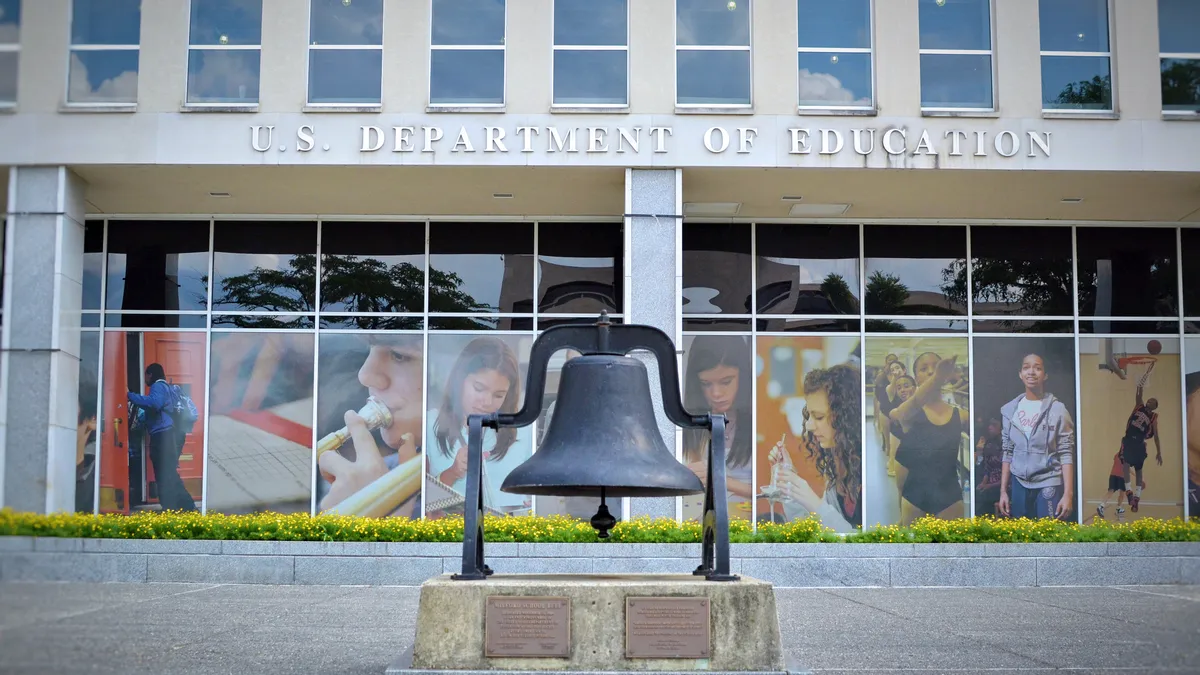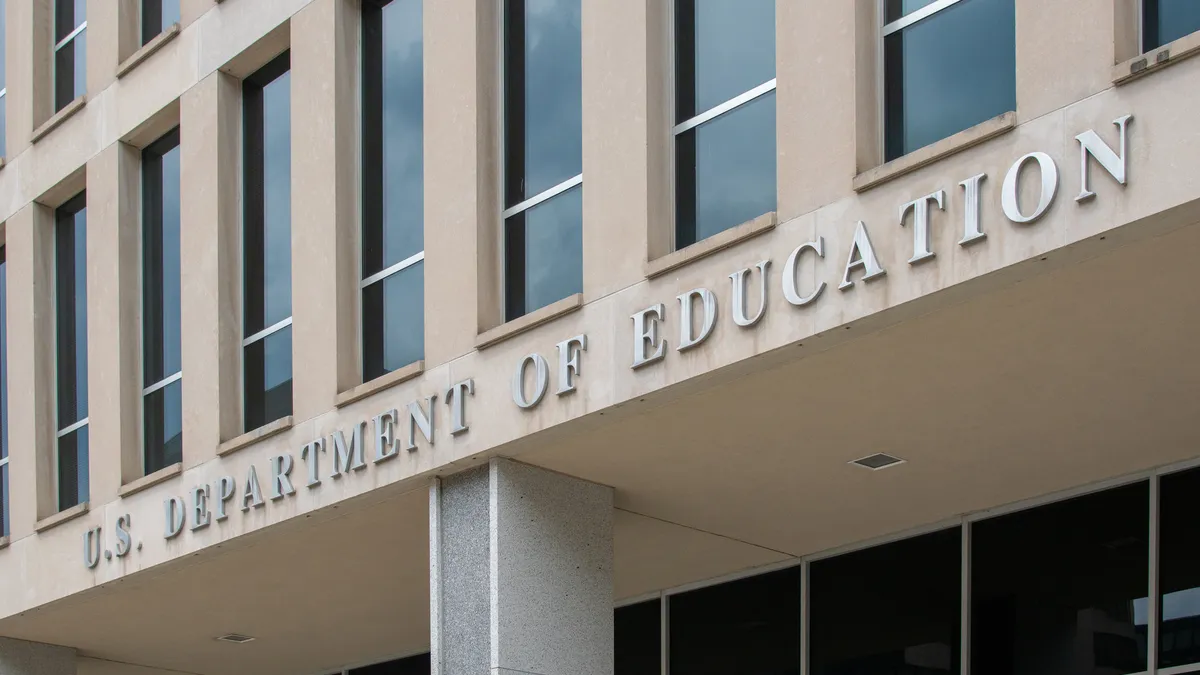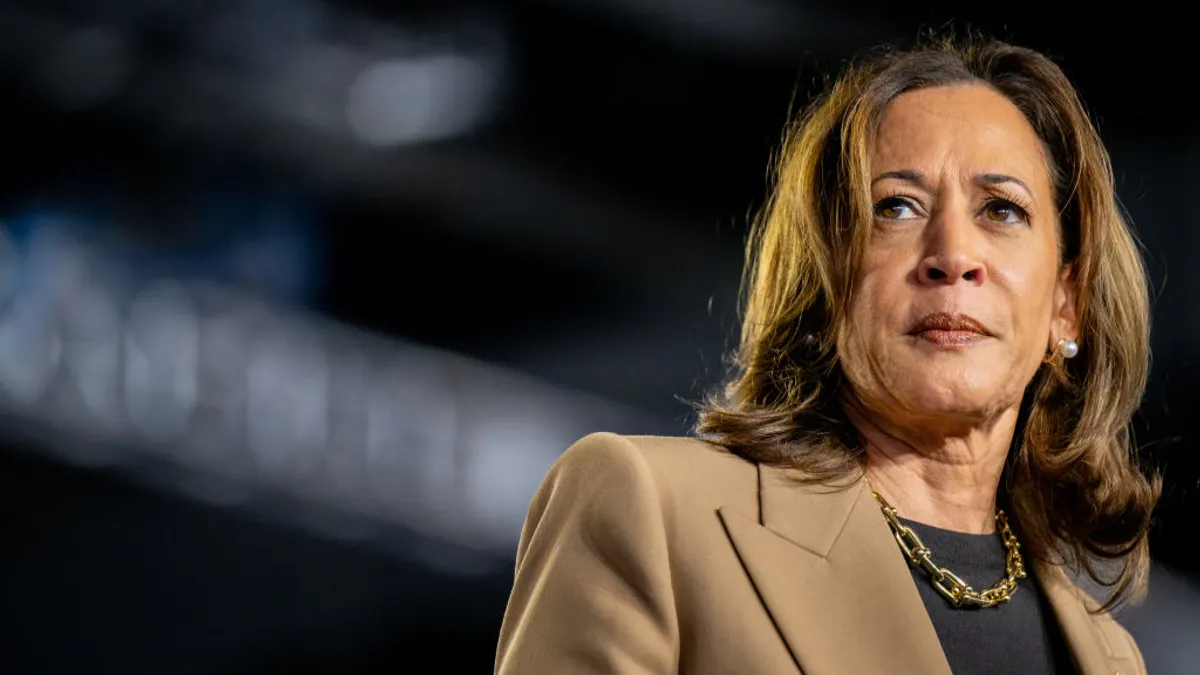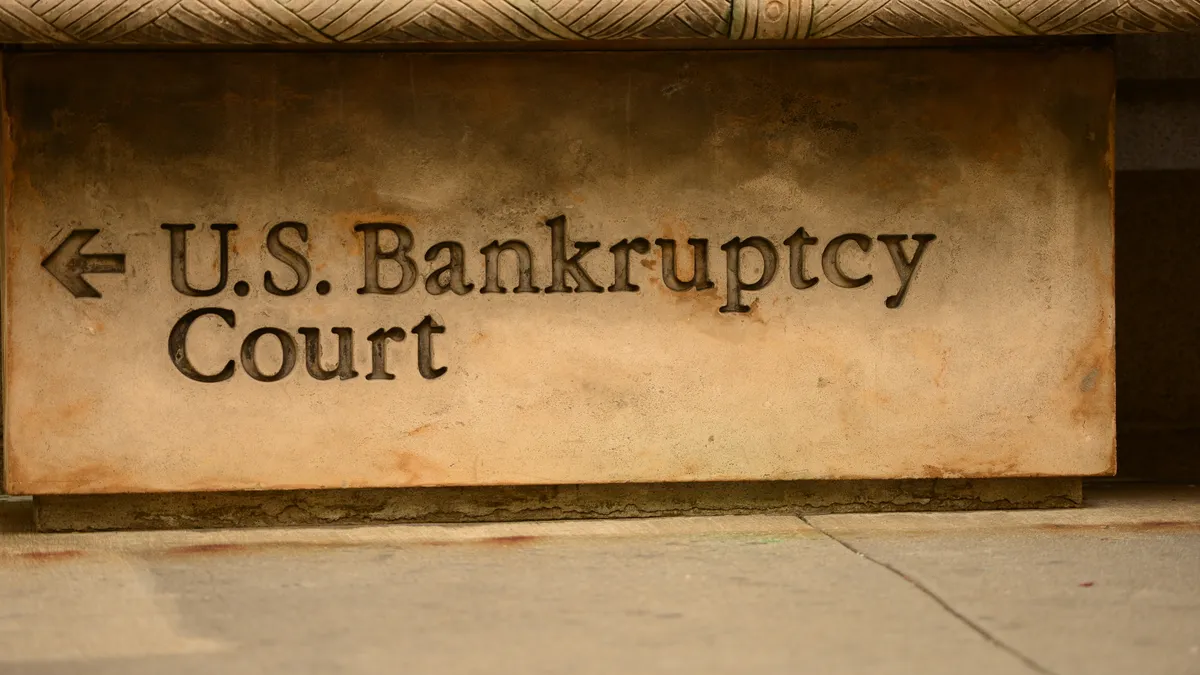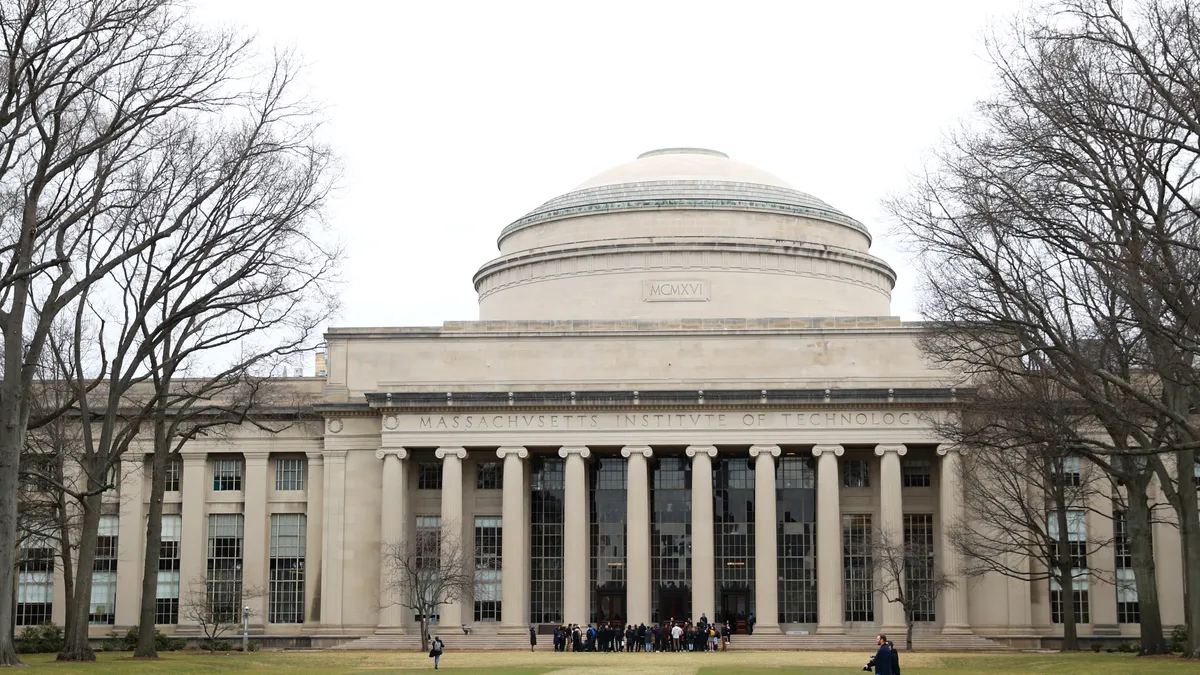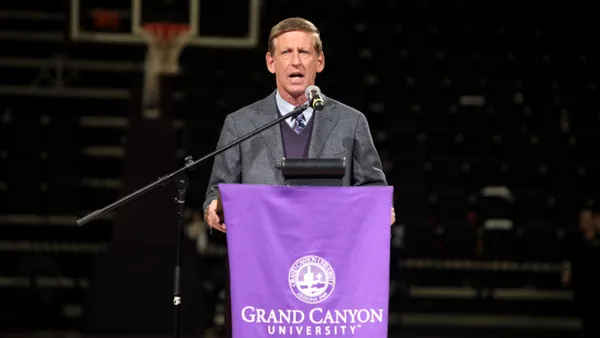The U.S. Department of Education this week released new details about provisions it wants to include in its forthcoming gainful employment rule, a measure that would hold postsecondary career education programs responsible for ensuring their graduates can find work and pay off their student loans.
In a new draft of the rule, the Ed Department is proposing using two metrics to assess career education programs. One would compare college graduates' earnings to their student loan debts, while a new measure would compare their earnings to those of high school graduates in their states.
If programs are graduating students whose debt-to-earnings ratios are too high or whose earnings don't leave them better off than high school graduates in their states, the programs could lose access to federal financial aid. The rule covers almost all programs at for-profit colleges as well as nondegree programs at nonprofit institutions.
The proposal is a key part of the Biden administration's pledge to crack down on the for-profit college sector. The Ed Department is introducing the new provisions before the final week of negotiated rulemaking, in which the agency convenes stakeholders to reach consensus on new regulations.
The negotiators, who include college officials and policy advocates, will also consider a raft of other regulatory changes next week, including changes to the 90/10 rule. That rule prohibits for-profit colleges from drawing more than 90% of their revenue from federal financial aid. While military education benefits didn't previously count in the 90% calculation, Congress altered federal law last year to include them, starting next year.
This isn't the first time in recent years that gainful employment has been debated.
The gainful employment rule first went into effect in 2015 after several years of legal wrangling, but former Education Secretary Betsy DeVos moved to revoke it only three years later. Just weeks before former President Donald Trump took office in 2017, however, the Ed Department estimated that more than 800 programs did not meet the rule's standards and said the vast majority of failing programs were offered by for-profit colleges.
A simple and intuitive measure?
The Ed Department's new proposal is more rigorous than the Obama-era version, a change that some policy advocates and researchers lauded. While the 2015 version only relied on a debt-to-earnings ratio to identify failing programs, the new proposal would also use high school graduates' median earnings as a benchmark to assess whether career education programs' graduates are earning enough.
"A high school earnings threshold, like the one proposed by ED, is a clear, simple, and intuitive way to measure the gains from a college education," said Stephanie Cellini, a public policy and economics professor at George Washington University, in an email.
Policy experts say the previous regulation's debt-to-earnings ratio is critical to ensure programs aren't saddling students with more student loans than they can pay off. But Cellini and another George Washington University researcher argued in a recent report that colleges seeking access to federal financial aid should also be able to prove their programs give students a boost to earnings above what they would have made with just a high school education.
Other policy experts echoed those arguments.
"Not having an earnings threshold really undervalues the time that people are spending going to these programs," said Amy Laitinen, senior director for higher education at New America, a left-leaning think tank.
It's still unknown how many programs are at risk of failing under the proposal. While negotiators have asked the Ed Department for data on the impacts, the agency hasn't yet released an analysis.
Kyle Southern, an associate vice president at The Institute for College Access & Success, said one of the organization's top priorities is reinstating the gainful employment rule. While TICAS is open to a more rigorous measure, the organization wants to assess data on how the change will impact students.
Still, Southern said that racial economic equity is at the center of the gainful employment rule.
"We get lost a lot of time in the minutiae over the metrics and running these analyses — which are really important — but fundamentally, we know that failing programs overwhelmingly target students of color," Southern said. "This is such an important priority for us because it's really an essential safeguard."
What for-profit colleges think
Over the course of negotiated rulemaking, for-profit advocates have argued that the gainful employment rule and other regulations targeting their sector should be applied more broadly across higher ed.
"We think that if there are accountability measures that they should apply to all programs and all institutions," said Nicholas Kent, senior vice president of policy and regulatory affairs at Career Education Colleges and Universities, an organization that represents for-profit institutions.
Others point out that the Higher Education Act, the sweeping law governing federal financial aid programs, dictates which sectors and programs the regulations must cover.
"They should talk to Congress," said Laitinen. "Congress is very clear, and has been repeatedly clear over a decade of what this applies to."
However, Kent cited a 2020 report published by the Brookings Institution that argued the Ed Department has the legal authority to apply the types of accountability measures the gainful employment proposal includes across all sectors.
"Quite honestly, I think it's a lack of political will," Kent said.
If the negotiators don't reach consensus, the Ed Department will have the power to craft its own regulations, which could take effect as soon as next year. But agreement among the majority of negotiators could sway the agency.
If all but one or two negotiators reach consensus, Southern said, "that's a really strong indicator that the department shouldn't make major changes to what they've proposed."







